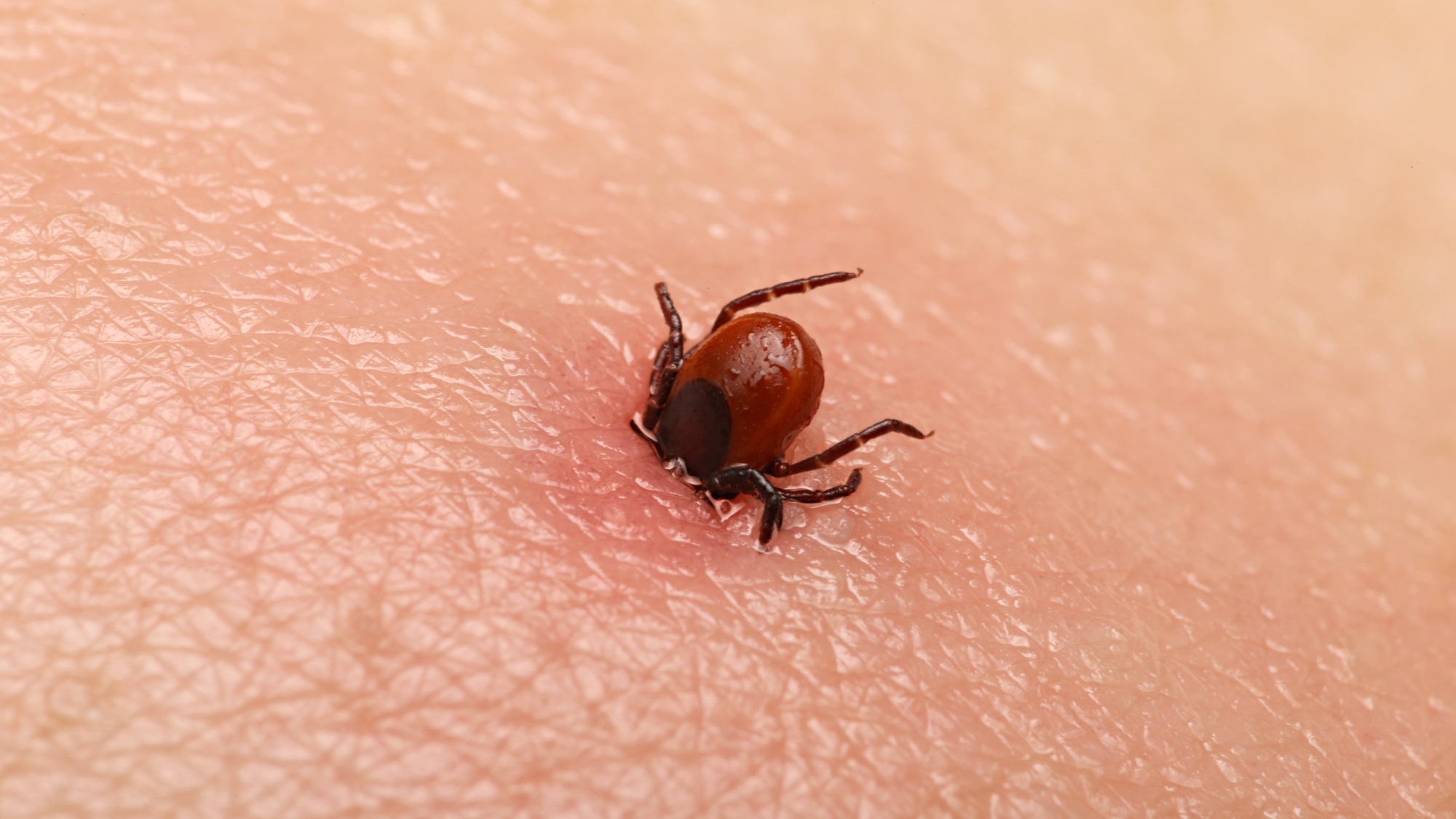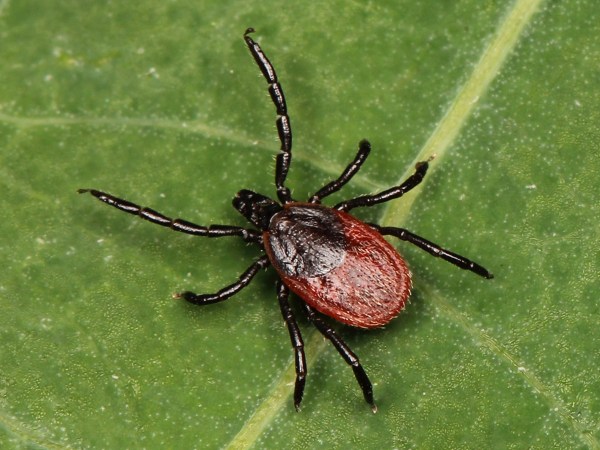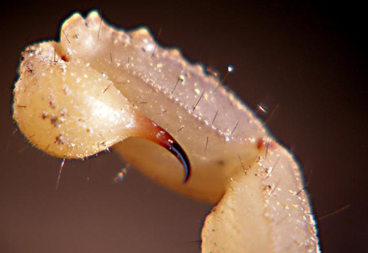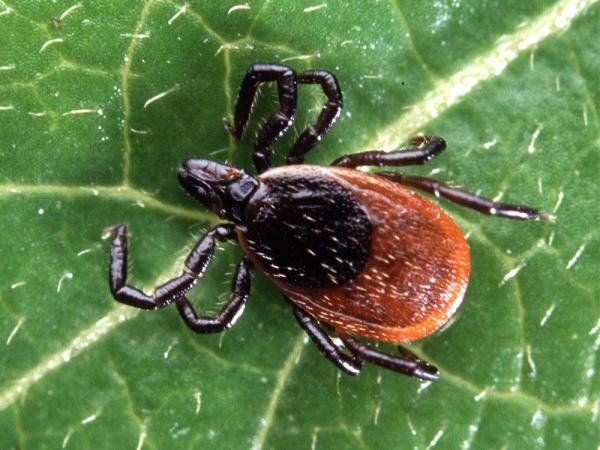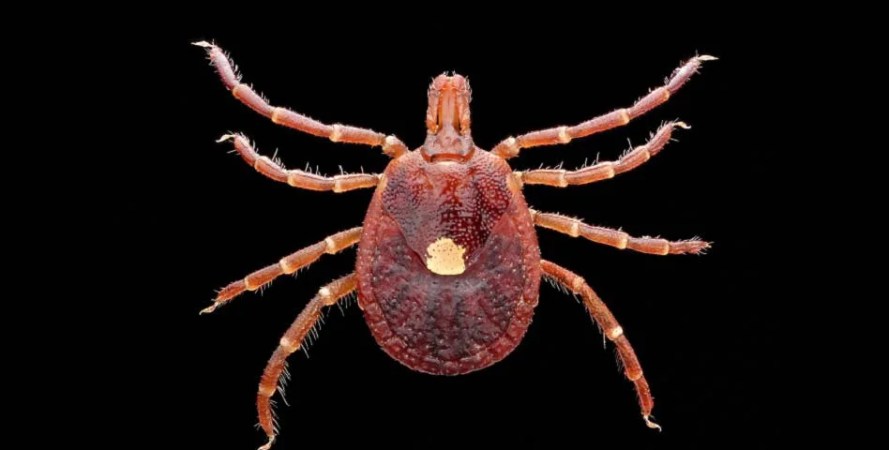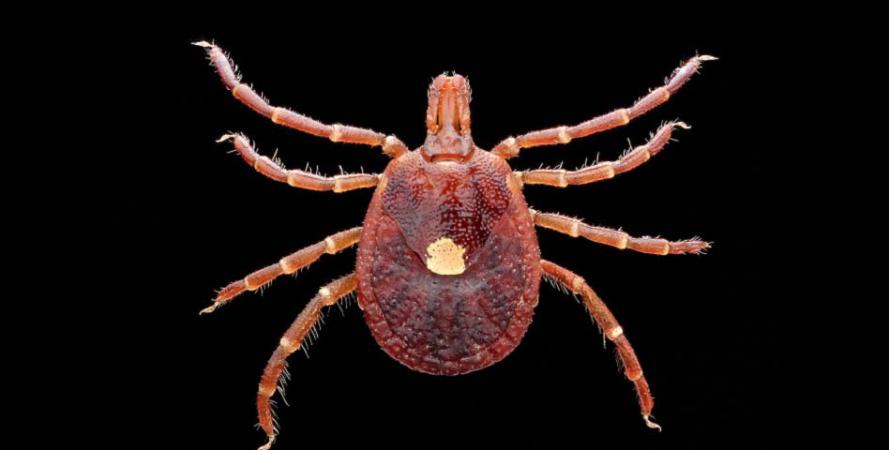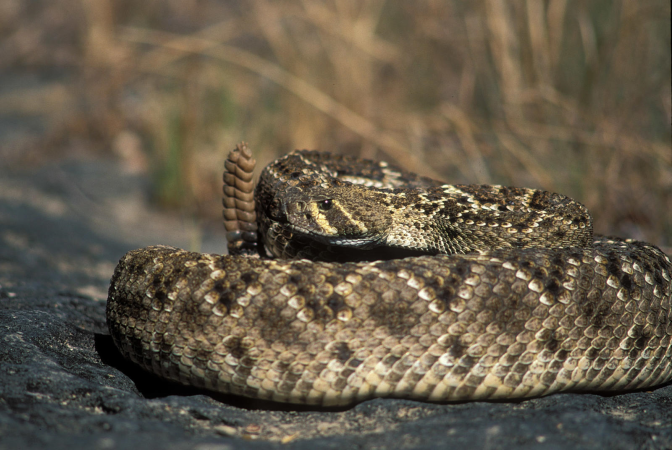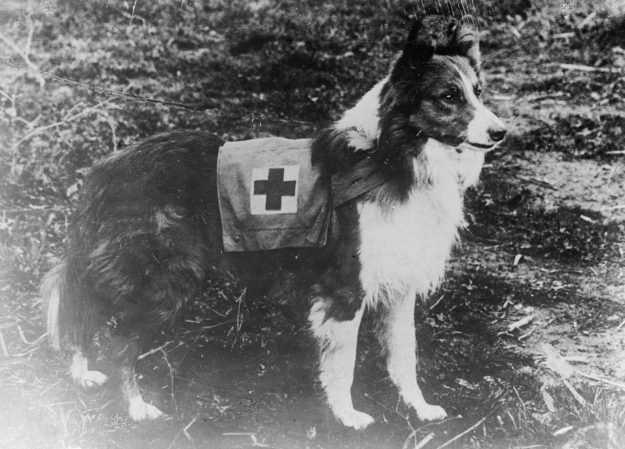Everything we know about tick bite symptoms seems to have been watered down to a single telltale warning sign: the bullseye rash. If no red rings show up around the site of your tick bite, then you’re fine, right? Not necessarily, according to the experts.
There are plenty of tick bite symptoms that warrant a visit to your doctor’s office. While increasingly common (and now of concern year-round in some parts of the country), tick bites are not something to take lightly. The health consequences can range from an irritated bite mark that lasts a few weeks to a serious illness that lands you in the hospital or with chronic complaints.
We spoke with public health entomology expert Phurchhoki Sherpa, coordinator for the Purdue University Public Health Entomology Program. Medical entomology is a fancy term for the area of medicine concerning insect-borne diseases like Lyme and malaria. Sherpa has spent countless hours in the field collecting ticks for research purposes, and she knows more than her fair share about what can happen when a tick bites you.
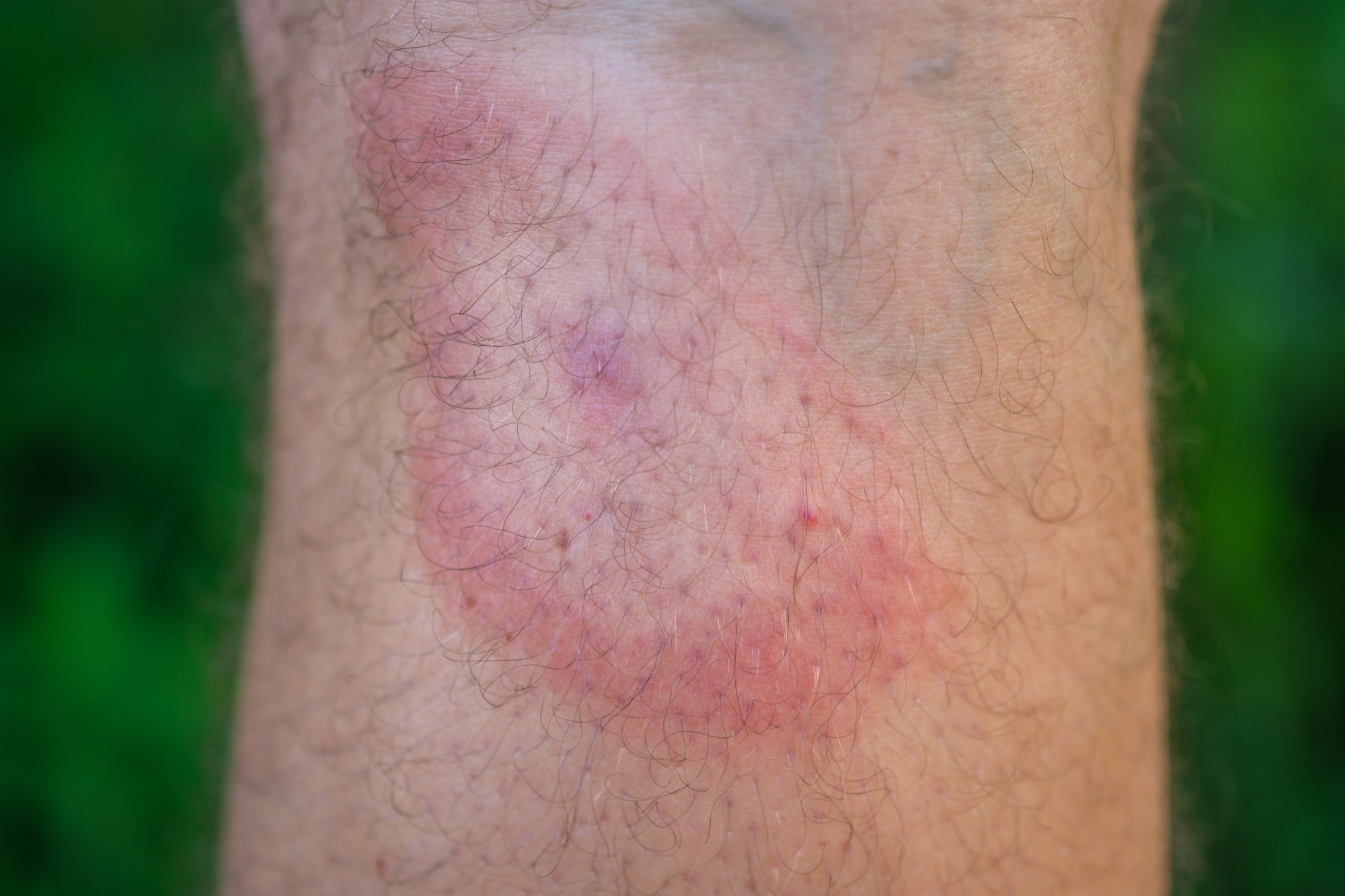
What to Do When a Tick Bites You
If you find a tick latched onto your skin, first you should review how to remove a tick and follow that procedure. (Quick refresher: grab your tweezers or tick removal tool, grasp the tick as close to your skin as possible, and pull until it releases.) The best immediate tick bite treatment options involve cleaning the bite with some sort of disinfectant—hydrogen peroxide or rubbing alcohol are good options—and applying an antibiotic ointment of your choosing. Your tick bite may look and feel like a chigger bite or any other bug bite in the days that follow, or you may find that an angry, itchy bump persists for weeks as it heals.
“It can look as benign as a mosquito bite, like a little itchy welt, especially if the tick has fallen off without you realizing you had it,” Sherpa tells Outdoor Life. She notes that such circumstances are common with tiny, immature ticks that are hard to see. “It can also look kind of scary, with a scab on the bite mark. It varies.”
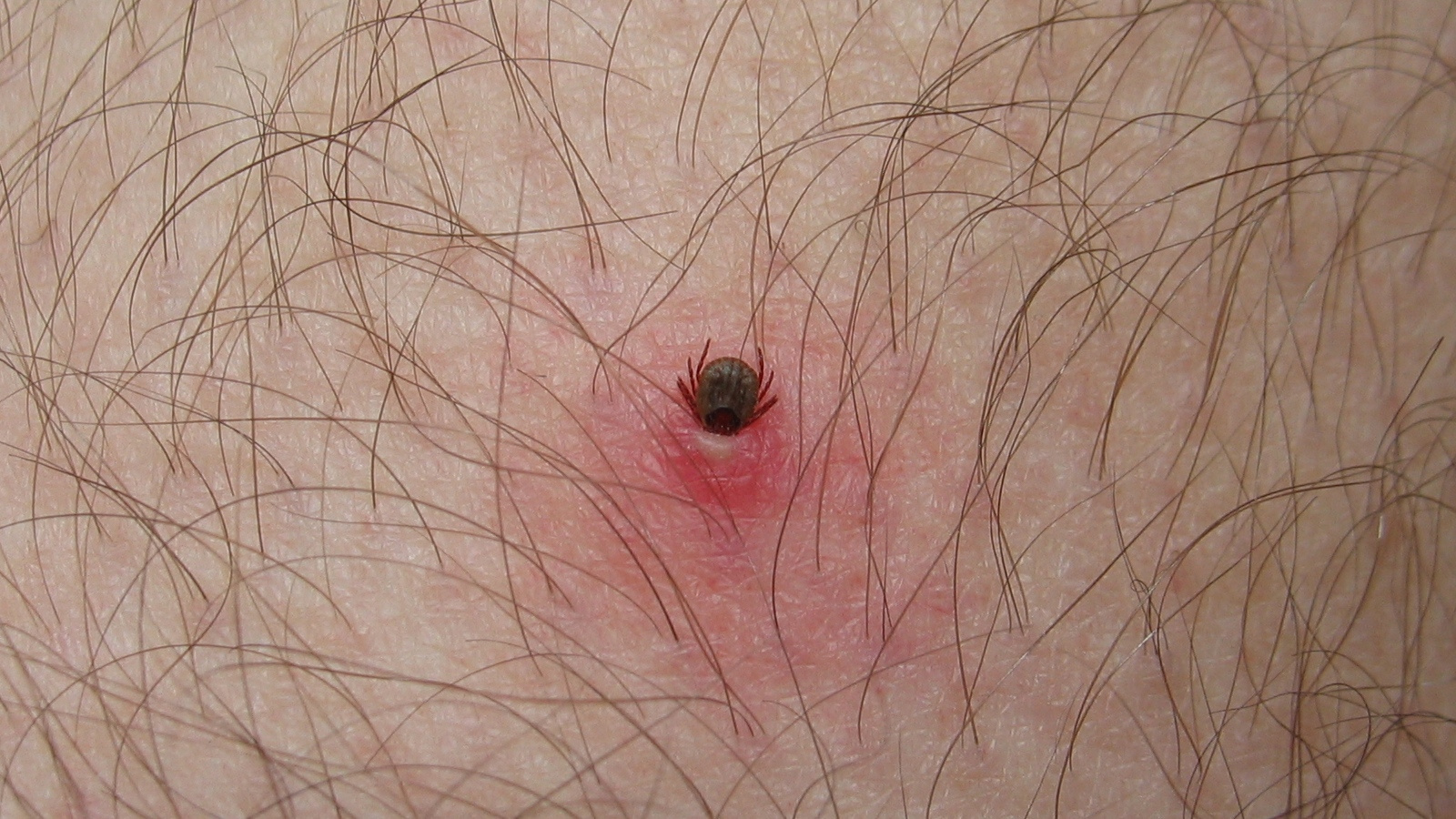
Common Tick Bite Symptoms
Sherpa is referring to the rashes, scabs, and swelling that can accompany a tick bite. Always keep an eye out for a bullseye rash (the traditional symptom that is present in some, though not all, Lyme disease cases). A bullseye rash can appear not just around the bite mark, but anywhere on the body. Small, hard scabs might form around the bite. If they’re dark and crusty, this might be an early sign of a type of tick-borne disease known as spotted fever (more on this in a minute). If the bite mark exhibits other signs of infection, like extreme swelling, pustules, blistering, or anything else abnormal, seek medical treatment immediately.
Beyond the early, visible symptoms of a tick bite, be on the lookout for these more systemic symptoms that most or all tick-borne illnesses share. These symptoms might pop up anywhere from a day to a few weeks after the bite:
- Fever
- Chills
- Headache
- Muscle ache
- Fatigue
- Nausea/vomiting
- Joint aches/arthritic pain
Tick-Borne Illnesses You Should Know About
Most tick bites will not cause you any further trauma than a mosquito bite would. After all, half or fewer of all ticks are infected with transmissible diseases. If the tick wasn’t latched deep into your skin or wasn’t engorged with blood yet, it probably didn’t get the chance to transmit anything. For example, it usually takes at least 36 hours for an attached tick to transmit Lyme disease to its human host.
But if your tick bite does transform into something of concern, it’s good to know about the various tick-borne illnesses you could develop. The risk of each tick-borne illness changes depending on where in North America you picked up the tick, Sherpa says. This is because different types of ticks carry different diseases.
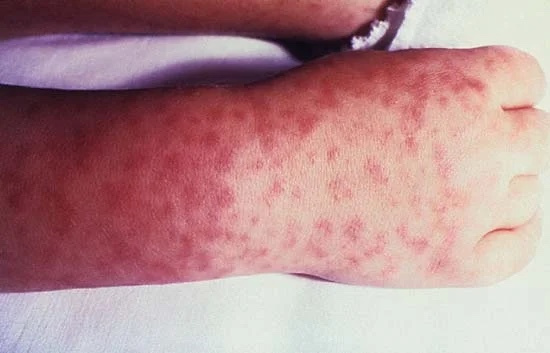
This is not an exhaustive list of all possible tick-borne illnesses. But here are eight tick-borne diseases that you should absolutely know about.
Anaplasmosis
Regions: Most common in East and Upper Midwest, some cases along Pacific Coast and portions of Southwest
Ticks that carry it: Black-legged ticks, Eastern and Western
Symptoms:
- Chills
- Headache/muscle aches
- Nausea/vomiting/diarrhea
- Respiratory issues
- Bleeding issues
- Organ failure
Type of disease: Bacterial
Treatment: Antibiotics, commonly Doxycycline
Babesiosis
Regions: Northeast and Upper Midwest
Ticks that carry it: Black-legged ticks, especially nymphs (tiny, immature ticks that are hard to see)
Symptoms:
- Fever
- Chills/sweats
- Headache/body aches
- Nausea/loss of appetite
- Fatigue
Type of disease: Parasitic
Treatment: Unnecessary if asymptomatic. For symptomatic patients, a combination of anti-parasitic/antifungal drugs and antibiotics.
Colorado tick fever
Regions: Mountain West, Pacific Northwest, Southwest
Ticks that carry it: Rocky Mountain wood tick
Symptoms:
- Headache/body aches
- Fever (sometimes “biphasic,” or two stages of fever interrupted by short period of relief)
- Chills
- Fatigue
- Occasional nausea/diarrhea/vomiting
- Occasional sore throat and rash
Type of disease: Viral
Treatment: Fluids, pain meds, severe cases should seek hospitalization for IV fluids and medication
Ehrlichiosis
Regions: Southeastern and South-central U.S., from East Coast to West Texas
Ticks that carry it: Lone Star tick, some Eastern black-legged ticks
Symptoms:
- Fever
- Chills
- Severe headache/muscle aches
- Splotchy or dotted rash (especially in children)
- Confusion
- Nausea/diarrhea/loss of appetite
- Brain swelling and damage to nervous system
- Respiratory failure
- Uncontrolled bleeding
- Organ failure
- Death
Type of disease: Bacterial
Treatment: Antibiotics, commonly Doxycycline
Lyme disease
Regions: Eastern half of U.S., Pacific coast
Ticks that carry it: Black-legged ticks, Eastern and Western
Symptoms:
- Fever
- Chills
- Headache
- Fatigue
- Muscle/joint aches
- Swollen lymph nodes, joints
- Rash (particularly bullseye) that grows
- Facial palsy/drooping
Type of disease: Bacterial
Treatment: Oral or IV antibiotics, depending on severity. Severe cases might require chronic lyme disease treatment.
Powassan virus
Regions: Northeast, Great Lakes region
Ticks that carry it: Black-legged tick, Groundhog tick, Squirrel tick
Symptoms:
- Often asymptomatic
- Fever
- Headache
- Vomiting
- Weakness
- Encephalitis (Brain infection)
- Meningitis (Swelling of brain and spinal cord)
Type of disease: Viral
Treatment: Fluids and pain medication, severe cases should seek hospitalization for IV fluids, meds, and support with any brain/spinal cord swelling or respiratory issues
Rocky Mountain spotted fever
Regions: Nationwide, most common in Mid-Atlantic and lower Appalachia
Ticks that carry it: American dog tick, Rocky Mountain wood tick, Brown dog tick
Symptoms:
- Fever
- Headache
- Rash (splotchy or dotted)
- Nausea/vomiting
- Stomach pain
- Muscle pain
- RMSF develops quickly and can cause moderate to severe damage to tissues and extremities if left untreated. Amputations might be necessary. Hearing loss, paralysis, and loss of mental function are also possible.
Type of disease: Bacterial
Treatment: Antibiotics, commonly Doxycycline
Tick Bite Prevention
Fortunately, with proper tick bite prevention, there’s no reason to avoid the outdoors—especially not during the most enjoyable months of the year.
Dress, Treat, and Check
Tick bite prevention goes beyond simply drowning yourself in the best tick repellent. It also involves wearing the right clothes, treating your gear with permethrin, and doing multiple tick checks in the field and after the day is over.
“I tell [hikers] to wear light-colored clothing so they can detect ticks earlier and faster, especially the ones that would go unnoticed if we wore patterns or dark clothing,” Sherpa says. “Tuck your shirt into your pants, tuck your pant legs into your socks, always wear close-toed shoes with long socks when you’re outdoors.”
Sherpa also acknowledges that hunters have to do things a little differently if they want to avoid tick bites and the scary symptoms that can come with them. We spend more time bushwhacking than we do on trails, we wear dark and patterned clothing (hello camouflage), and we’re outside for a long time.
“When you’re hunting, you’re in the field for a while. You’re waiting, walking around. So do a tick check every few hours. The faster you can find the tick and get rid of it, the better,” she says. “When you get home, check yourself and your camo clothing. If you have a dryer, put your clothes in the dryer on high heat for about 20 minutes. The heat will decimate the ticks. And the sooner you can take a shower, the better.”
If showers and dryers are unavailable back at camp, or you refuse to put your expensive merino wool or rain gear in a dryer, treating your clothes with permethrin is the best line of defense. Make sure to follow the instructions on the bottle and wear gloves to avoid getting any on your skin.
Parts of the Body Likely to Get Tick Bites
When it comes to tick checks, close attention to detail makes all the difference. Check under your armpits, behind your ears, along your hairline, in your groin area, between your toes, behind your knees, and even in your belly button. Sherpa highlights all these spots as dark, easy-to-overlook hiding holes for ticks of all sizes.
If your legs and arms are bare, not only is there a chance they bite your ankles or inside your elbows, but they could also crawl under your shirt or shorts. By wearing long sleeves and pants and tucking in all your layers, you limit a tick’s chances of accessing any skin, let alone skin in a hard-to-reach place.
Tick Bite FAQs
Once a tick latches on and starts feeding, it will suck blood for several days before eventually becoming fully engorged and falling off. This “blood meal” gives the tick the nutrition it needs to develop into its next life phase.
The only way to kill a tick on a human is by removing it properly and disposing of it by crushing it between tweezers and throwing it away. Don’t listen to any advice that involves burning the tick, dousing it in nail polish remover, or squirting hand sanitizer all over it. None of these tricks will get the tick to detach.
The best immediate tick bite treatment involves disinfecting the small wound and putting an antibiotic ointment on it. Hydrogen peroxide, antiseptic wipes, and rubbing alcohol are all great options for quick disinfecting. If you’re in a serious pinch, you can use an alcohol-based mouthwash or even a few drops from your flask of campfire whiskey. After that, apply an antibiotic ointment. To treat underlying symptoms of a tick-borne disease, see your doctor.

Final Thoughts
Tick bite symptoms can range from a small, itchy welt to a series of flu-like ailments that could land you in the hospital if left untreated. That’s why it’s crucial to know what types of ticks live in your area and what diseases they might carry.
Read Next: How to Remove a Tick From a Dog
The good news is that these scary tick-borne diseases with their array of side effects are all avoidable, thanks to the time-tested prevention strategies outdoorswomen and men now swear by. The age-old adage about an ounce of prevention being worth a pound of cure holds true, Sherpa says.
“We as humans are lazy. We don’t like dealing with that extra work. But prevention goes a long way when it comes to tick bites and tick-borne diseases. It is really important to take preventative measures when you go out,” Sherpa says. “If people aren’t sure about the worthiness of prevention measures, they should talk to someone who has had a tick-borne disease before.”

